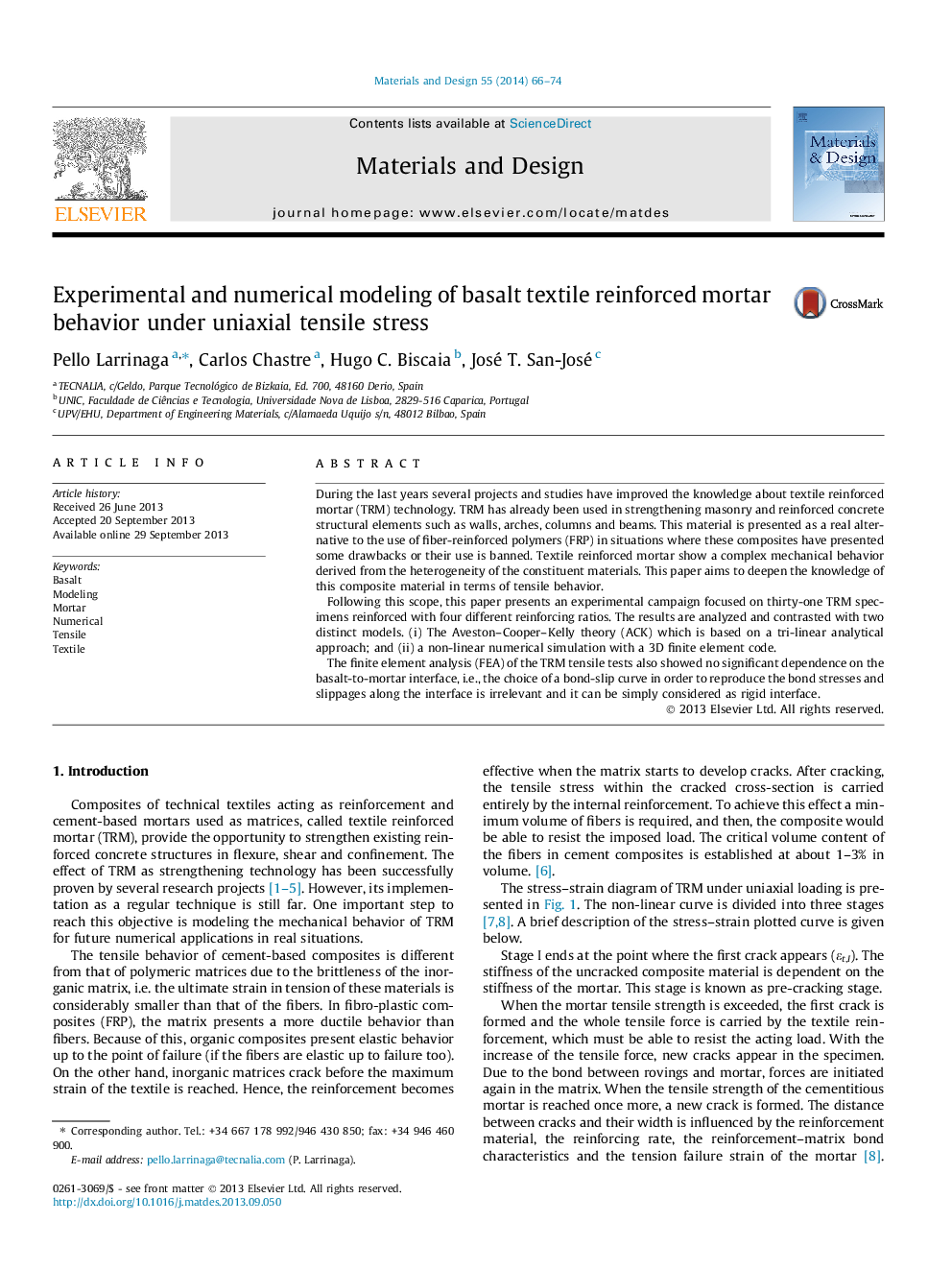| Article ID | Journal | Published Year | Pages | File Type |
|---|---|---|---|---|
| 829512 | Materials & Design (1980-2015) | 2014 | 9 Pages |
•Making more deepen the knowledge of textile reinforced mortar in tensile stress.•Analyzing the effect of the reinforcing ratio of the composite.•To compare results with Aveston–Cooper–Kelly theory.•To develop a numerical model based on a finite element code.•Considering the importance of the bond-slip law of the mortar-to-textile-interface.
During the last years several projects and studies have improved the knowledge about textile reinforced mortar (TRM) technology. TRM has already been used in strengthening masonry and reinforced concrete structural elements such as walls, arches, columns and beams. This material is presented as a real alternative to the use of fiber-reinforced polymers (FRP) in situations where these composites have presented some drawbacks or their use is banned. Textile reinforced mortar show a complex mechanical behavior derived from the heterogeneity of the constituent materials. This paper aims to deepen the knowledge of this composite material in terms of tensile behavior.Following this scope, this paper presents an experimental campaign focused on thirty-one TRM specimens reinforced with four different reinforcing ratios. The results are analyzed and contrasted with two distinct models. (i) The Aveston–Cooper–Kelly theory (ACK) which is based on a tri-linear analytical approach; and (ii) a non-linear numerical simulation with a 3D finite element code.The finite element analysis (FEA) of the TRM tensile tests also showed no significant dependence on the basalt-to-mortar interface, i.e., the choice of a bond-slip curve in order to reproduce the bond stresses and slippages along the interface is irrelevant and it can be simply considered as rigid interface.
